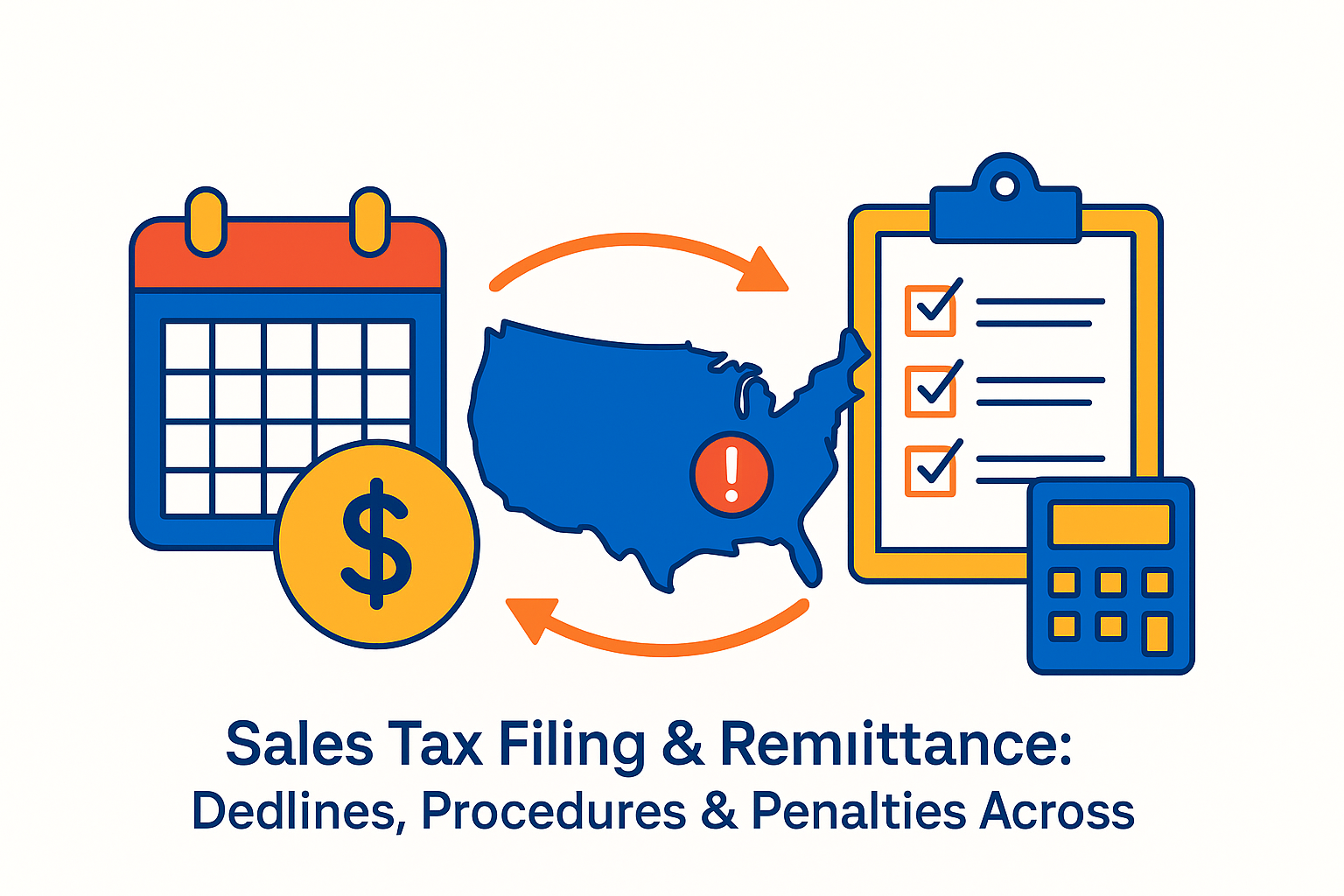If there’s one thing that keeps business owners up at night, it’s the fear of missing a sales tax filing deadline. The penalties can add up fast and mistakes can trigger audits, interest, or even suspension of your business license. Let’s break down how filing and remittance work in the U.S., common deadlines, and how IST simplifies every step.
Understanding Sales Tax Filing & Remittance
Filing and remitting sales tax are two distinct but connected steps. Filing means submitting your report detailing how much sales tax you collected, while remittance means sending that money to the state. Every jurisdiction—from California to Texas—has its own schedule, forms, and rules.
Typical Sales Tax Filing Frequencies in the U.S.
States determine filing frequency based on sales volume.
- Monthly: High-volume sellers (e.g., California, New York)
- Quarterly: Mid-size businesses (e.g., Georgia, North Carolina)
- Annual: Small sellers or seasonal businesses
Even within one state, frequency can change once your revenue increases. Transition words: therefore, consequently, and however planning ahead is crucial.

Key Deadlines You Need to Know
Deadlines vary, but most states require returns by the 20th day after the reporting period ends.
- California: Monthly returns due by the 24th of the next month.
- Texas: Monthly filers due by the 20th; quarterly by the 20th of the following month.
- New York: Quarterly filers due by the 20th after quarter-end.
- Florida: Monthly by the 1st; late by the 20th.
Even one day late can cost you. Automated reminders and dashboards like IST help ensure no date slips through.
Common Penalties for Late or Incorrect Filing
Each jurisdiction applies its own penalties:
- Late Filing: 5% to 10% of tax due, depending on delay.
- Underpayment: Up to 25% penalty plus daily interest.
- Incorrect Data: Repeated errors may trigger audits.
In short, filing errors don’t just cost money, they damage compliance credibility. However, with automated tools like IST, accuracy improves dramatically.
Tips for Staying Compliant with Sales Tax Filing & Remittance
- Automate the Process – Use IST to track deadlines and calculate accurate amounts automatically.
- Stay Updated on Rule Changes – States frequently change thresholds or forms.
- Reconcile Monthly – Match collected and remitted amounts regularly.
- Keep Documentation – Maintain exemption certificates, invoices, and reports for audits.
- Review Nexus Obligations – Selling online? You might owe taxes in more states than you realize.
How IST Simplifies Sales Tax Filing
IST automatically calculates and tracks sales tax filing data for every U.S. jurisdiction. Whether you file monthly or quarterly, it generates precise numbers and supports both manual entry and API integration. You’ll always know:
- What you owe
- When to file
- Which state forms to use
Transition words like “moreover” and “as a result” emphasize that IST doesn’t just automate calculations, it prevents compliance risks altogether.
Final Words
Sales tax filing and remittance are essential for staying compliant, but the complexity across U.S. jurisdictions can overwhelm even seasoned professionals. The good news? You don’t have to handle it manually anymore.
Stay compliant, on time, and audit-ready, no matter where you sell. Start simplifying sales tax filing with IST today.

Leave a Reply